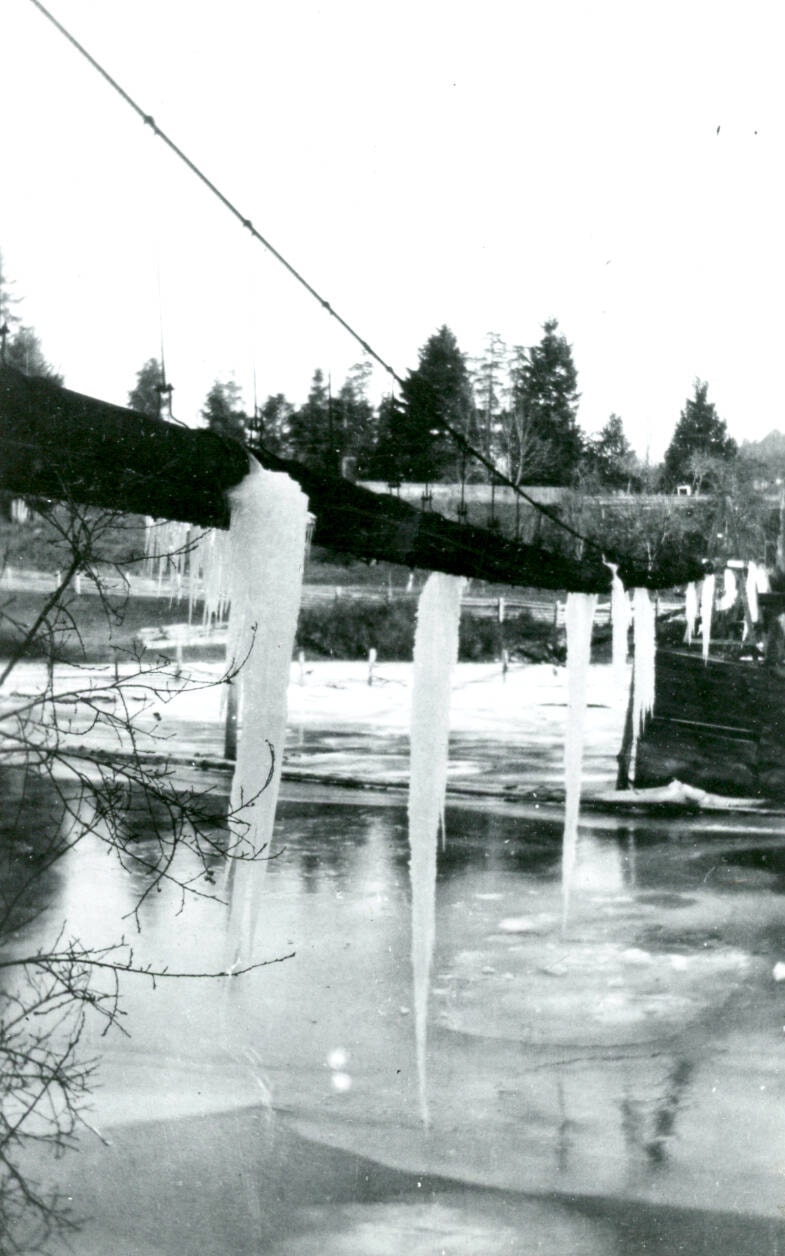Elida Peers | Contributed
This photo may look puzzling to readers, but it shows a water line suspended across the Sooke River alongside the bridge in the early 1900s. In a cold winter, the icicles were formed through leaks in the waterline, creating a fascinating pattern across the river.
Folks living in our community depended on hand-dug wells (or creeks) for their water supply when in 1913, a group of men formed the Sooke Harbour Water Company.
The Canadian Pipe Company carried the water through a line of 27,000 pipes laid along a hand-dug ditch. The distance was about four miles from its source at East Branch to the centre of Sooke.
MORE HISTORY: A bird’s-eye view of Sooke 25 years ago
There was so much excitement at the concept of piped water available from a faucet that a celebration was held at the resort hotel (the Belvedere) that then stood on the headland west of the Sooke River so that the volunteer fire brigade could demonstrate the extent of the water pressure. In 1949 the Greater Victoria Water Board was formed, and today, of course, we are served by Capital Regional District Water Services.
East Branch is a term not recognized by newcomers to Sooke. It refers to the main eastern tributary of the Sooke River, a water source better known today as the Charters River. The Charters River is also home to a salmon hatchery and an interpretive center.
The view seen here is taken from what is now the parking lot of Sooke River Hotel (currently a liquor sales outlet) and looks northeast across the river to the Milne farm with the white picket fence in the background.
The photo was given to the museum in the 1970s by Agnes George, who lived at T’sou-ke Reserve No 1 and supplied us with much historical information before she died at 101.
•••
Elida Peers is the historian of the Sooke Region Museum. Email historian@sookeregionmuseum.com.
